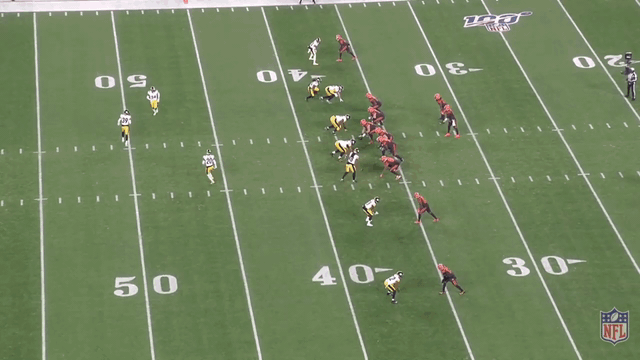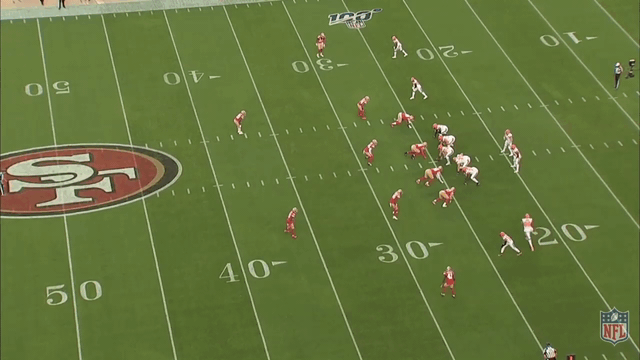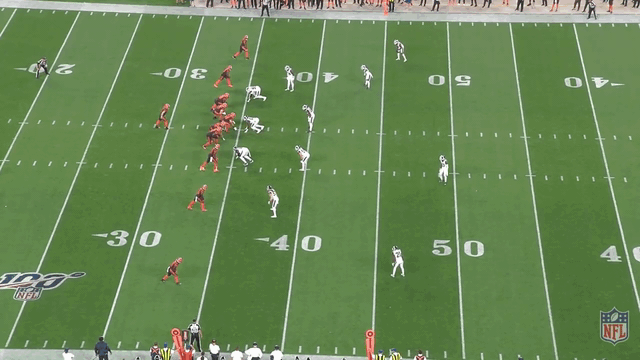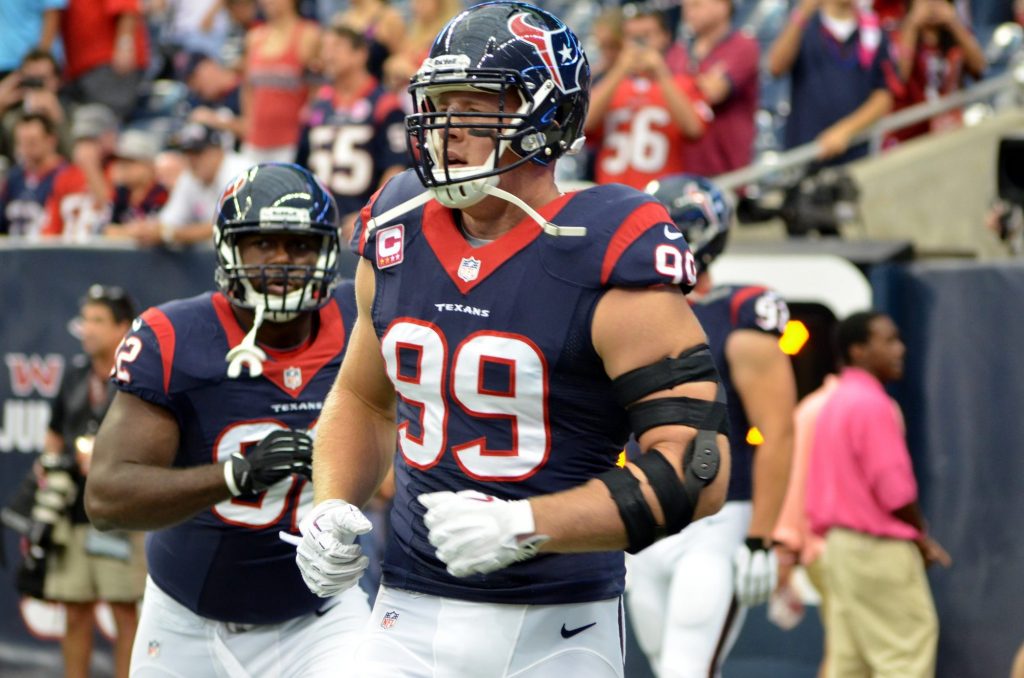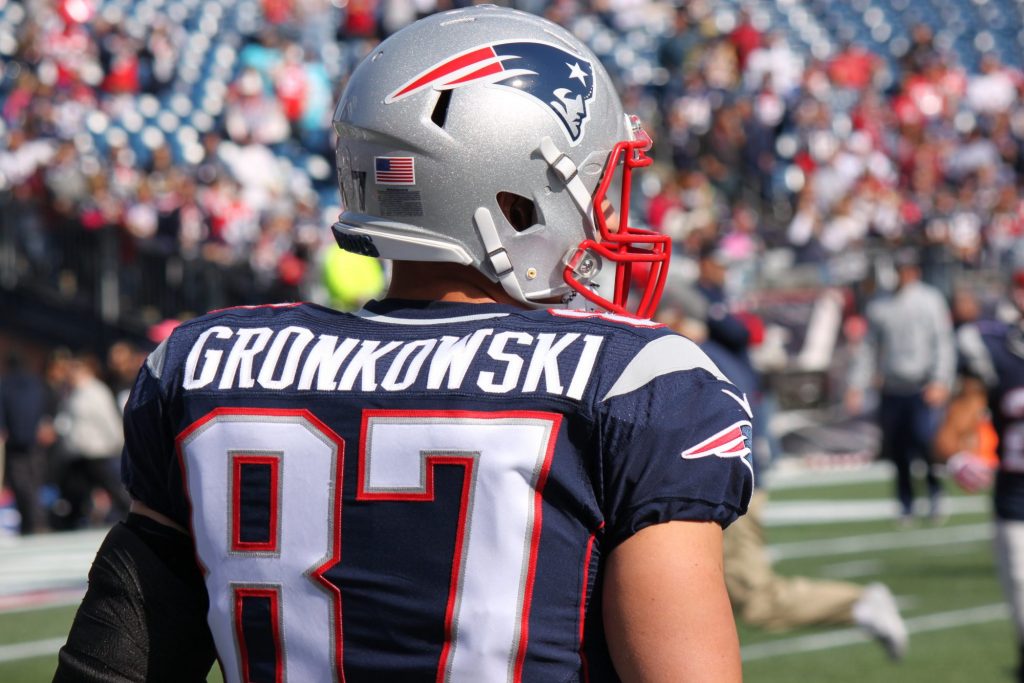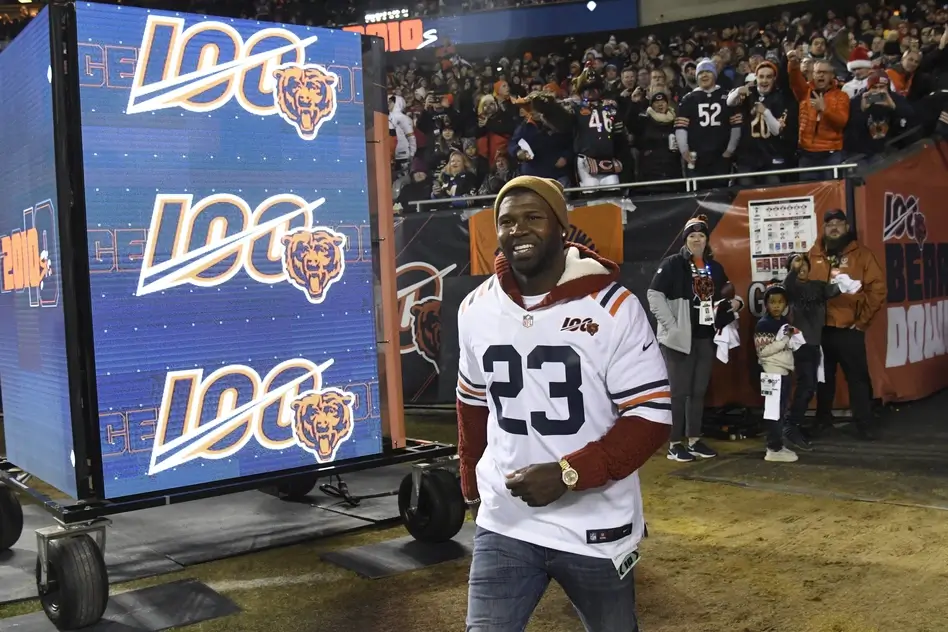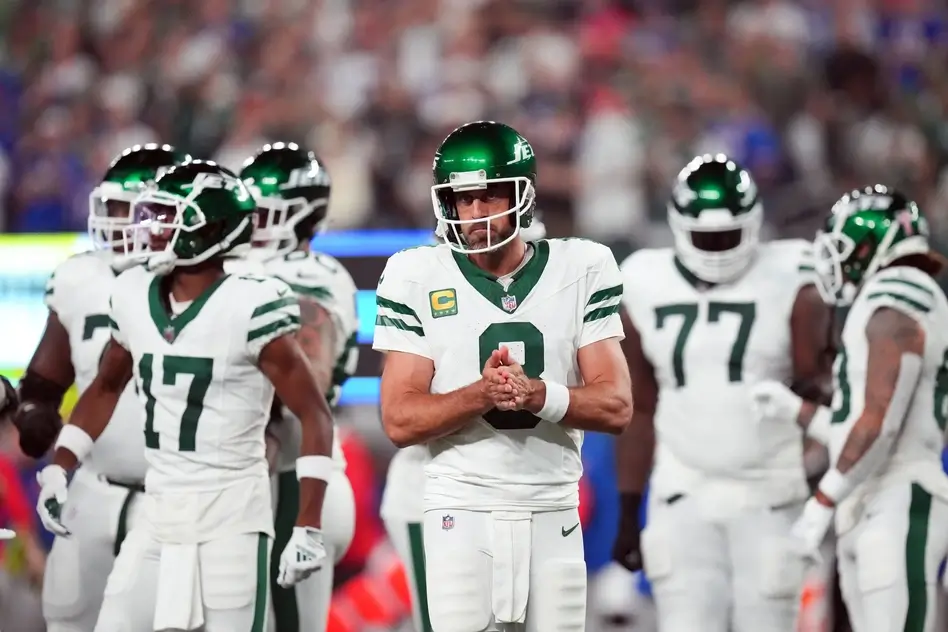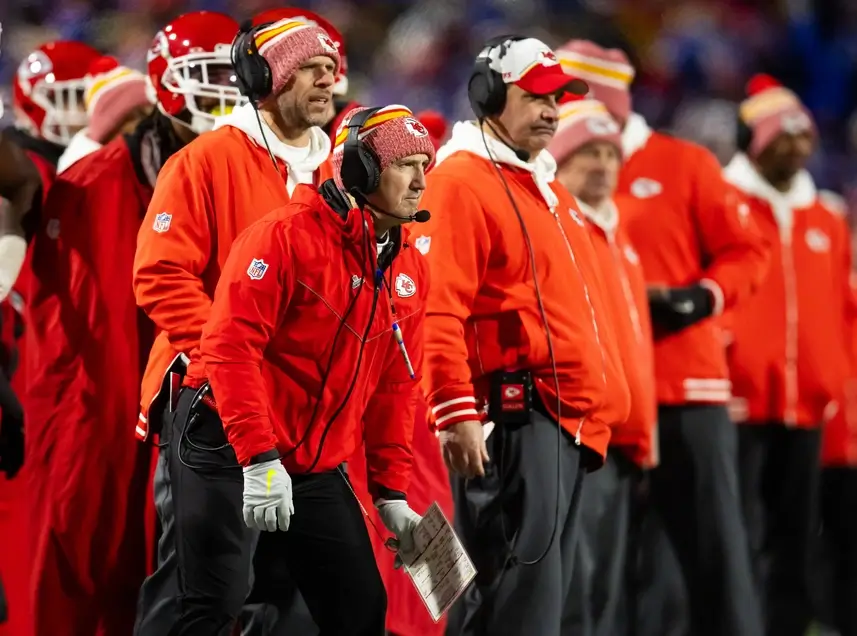The 2019 Cleveland Browns offence was, for latter of a better term, a complete and utter disaster. Per Pro-Football-Reference, the Browns offence ranked 22nd in points scored (335), 22nd in total yards accumulated (5455) and 28th in the average number of plays per drive (5.47). With an offence stacked at every skill position, first-year head coach Freddie Kitchens wasted a golden opportunity to challenge for the AFC North title and maybe even the Super Bowl.
Cleveland’s offensive troubles in 2019 are best summarised by the decline in the performance of their starting quarterback, Baker Mayfield. In 2018, Baker finished the season with a 63.8% completion percentage, 27 touchdowns, 14 interceptions and an average yards per attempt (Y/A) of 7.7 Y/A.
By comparison, in 2019, Baker’s completion percentage dropped to 58.9%, his touchdowns also fell to 22 and his interceptions rose to 21 (the second-most in the NFL behind Jameis Winston).
The appointment of Freddie Kitchens to head coach was a huge influence in Baker’s dip in form this past season. The O.C. of Baker’s rookie season, Kitchens was largely labelled as responsible for Mayfield’s meteoric rise. As a result, Kitchens was appointed head coach of the 2019 Browns and, as we all saw, it became apparent that Kitchens was not meant for the job.
Fired after only one season in charge, Kitchens’ debut season as head coach could not have gone worse. The former Alabama QB appeared to lack the organisation, leadership and play-calling acumen that all head coaches must possess in droves. Kitchens’ inability to lead a group of men was epitomised when, during a Week 15 loss to the Cardinals, many of the Browns players screamed ‘COME GET ME’ at the Arizona bench, as well as the rest of the NFL.
Both as a leader and as a strategist, Kitchens’ ineptitude must be taken into consideration when examining the failures of Baker Mayfield this past season.
The contrast between Mayfield’s 2018 and 2019 season has many NFL fan wondering what to make of the young gunslinger. While still early in the quarterback’s career, the question is worth asking – is Baker Mayfield any good? Let’s try to answer that by going through the good, the bad and the ugly about Baker Mayfield.
The Good
With how fast of a pace the NFL, and, to a larger extent, the world moves these days, it is easy to forget that Baker Mayfield is only entering his third season as a starter in the NFL (his second full season). And while Mayfield did less with more this past season, there are still many reminders of why there was so much hype surrounding the Browns QB.
While not extremely gifted athletically and lacking in height for the quarterback position, 6’1, Baker has an impressive arm. Due to the nature of Kitchens’ scheme, Mayfield often had to hit contested, vertical, deep downfield throws as well as tough throws towards the sideline, such as the one below.
As shown here, Mayfield has the arm to be able to deliver a throw that avoids the defender shading underneath the route as well as getting the ball to the boundary where only the receiver can get it. If you go back and view the opening drives to most Browns game, Mayfield excels. This is due to the Cleveland coaching staff using their ‘opening script’.
An opening script is a series of 10-20 plays that a coach plans out before the game starts. Some coaches, such as Chip Kelly, use long scripts which may consist of 30 plays. Whereas other coaches prefer to keep the script short and prefer to call plays in the rhythm of the game.
The use of a script allows Kitchens the opportunity to sequence plays together, creating a balanced, sometimes seamless flow from one play to the next. Each play choice feeds into the other, constantly keeping the defence on the back foot, without time to think. However, when Kitchens gets out of the script and into the moment, that is where we see him get overwhelmed. The play-calling becomes questionable, there is no rhythm or pattern to the calls. There are mistakes in personnel, receivers running the same route and penalties.
Yet the fact remains, when Mayfield is executing Kitchens’ script, the offence hums along smoothly. Just go back and look at the opening drive of the game in Week 1 against the Titans, or the Week 10 match-up against Buffalo. When working within a system, Mayfield is decisive in his reads, quick with his release and exceedingly efficient.
As well as working well in a system, Mayfield can also operate well when the play breaks down. Although sometimes guilty of extending plays too long (we’ll come to that later), Baker has shown the ability to make things happen.
This example comes from Week 11 when the Browns played the Steelers on Thursday Night Football (otherwise known as the infamous ‘helmet swing’ game). It’s 3rd & 8 early in the 1st for Baker and the Browns – key opportunity to keep the drive alive and set the tone for the rest of the rivalry game. The play breaks down and Mayfield is forced out of the pocket where he proceeds to bob and weave past two Steelers and deliver a perfect back-shoulder fade while on the run to Kareem Hunt. It’s this type of play that has made Mayfield so exciting to watch.
Speaking of Hunt, following the running-backs reinstatement Mayfield’s stats for the season saw an uptick in productivity. Following Week 8, Baker threw 15 TDs compared to just 7 in the games prior, he also threw fewer interceptions with 9 compared to 12, he was also sacked less.
To sum up, there is good reason to believe that Mayfield has a bright future in the NFL. When given a proper scheme to operate in, Baker looks like a top 10, top 5 QB. He can orchestrate an offence as well as assume agency when the play breaks down. With that in mind, there is no getting away from the fact that Mayfield struggled mightily in 2019.
The Bad
The statistics of Mayfield’s 2019 season makes for some damning evidence. Per Sports Info Solutions, in 2019, the former Texas Tech walk-on held the second-lowest Quarterback Rating (QBR) out of QB’s with minimum 250 throw attempts with 78.8. Mayfield ranked below Kyle Allen (80.0), Mason Rudolph (82.0) and Mitch Trubisky (83.0) in this category. Moreover, Mayfield was again second-lowest in total number of passes on target % with 65.2% of his throws being on target. This saw Baker ranked below fellow quarterbacks such as Andy Dalton, Jameis Winston and Kyle Allen. And finally, Mayfield had the second-lowest completion percentage in the NFL with a 58.9% completion rate. Jameis Winston (60.7%) and Mitch Trubisky (63.2%) both ranked higher than Mayfield.
So, what went wrong for Mayfield in 2019? Held back by a scheme that did not complement or support Baker in any way last year (we’ll address this later) Baker clearly struggled at points during the 2019 season. Not a stellar athlete, Mayfield struggled to see the field this year, while Kitchens did little to help implement clear pre-snap reads for Mayfield when the opportunity did arise to take advantage of a mismatch, Mayfield would often miss it.
The sophomore starter does have a tendency to look for the big play – which isn’t inherently a negative trait to have as we saw earlier – but Kitchens’ scheme exacerbated this already existing flaw.
An example we’ll look at here came in Week Five on Monday Night Football against the San Francisco 49ers.
It’s the first play of a new drive following a San Francisco go-ahead TD in the 1st quarter. What Mayfield needs to do is steady the offence away from home and slow the momentum of the home team. Baker does the opposite of this and tries to throw a 25-30 yard bomb to a rookie WR who is covered by Richard Sherman whilst being sacked.
Ideally here, Cleveland would not have a tight-end attempting to block Nick Bosa 1-on-1. However, Mayfield should be aware of the protection up front and have it in his mind to either check down or take the sack and protect the ball. This type of over-eagerness is common in young quarterbacks, although, away from home, down 7 in the 1st quarter, Baker needs to protect the ball here.
Another factor Mayfield struggled with this past season was reading the field. With such an embarrassment of riches at WR, its easy to see why a gunslinger of a QB would not hesitate to throw the ball deep and hone in on his star pass catcher- Odell Beckham Jr. As you’ll see below, an example of Mayfield staring down Beckham came in Week Three against the Rams.
The Browns are in 5-wide spreading out the Rams defence. At the bottom of the screen we see Rams linebacker Clay Matthews matched up on a slot receiver – this, an old, slow linebacker in coverage, is the matchup you want to exploit. Mismatches are what modern NFL offences are built on.
As the ball is snapped, Matthews immediately leaves the inside receiver, resulting in the seam being wide open. However, Mayfield doesn’t even look over there. Instead, he’s staring down Beckham who is double covered and almost throws a needless interception. This was a good play call by Kitchens and the onus here is on Mayfield to identify the mismatch, read the defence and execute.
While it is true that Kitchens’ scheme had a big part in the sacks and turnovers Baker suffered in 2019, the former Oklahoma Sooner was guilty of forcing the big play this year – both through not living to see the next down and honing on his star, diva wide receiver. With the hiring of Kevin Stefanski and his more horizontal, ‘West Coast’ system, Mayfield’s tendency to look for the big play will be curtailed as there will be little room for that old-fashioned gunslinging improvisation.
The Ugly
The bulk of the ‘the ugly’ lies with Freddie Kitchens and the Browns offensive scheme in 2019/20. The idea behind the Browns offence in 2019/20 seemed to revolve around the deep, vertical passing game. While Baker does have a good arm and can hit a number of tight-window throws, standing in the pocket for four to five seconds behind a shoddy offensive line, while OBJ practises 30-yard sprints downfield, is one way of getting your quarterback hit over and over again. In 2019, Baker was sacked 40 times, tied 7th in the league with Ryan Fitzpatrick. The only other non-scrambling QB to be hit more times than Mayfield was Matt Ryan who was sacked 48 times.
Two of the top offences in 2019, the Rams and the 49ers, stress the importance of check downs. It is vital to have a safety valve option as an alternative when the deep ball is covered or the pressure is getting to the quarterback. However, after watching the film, time and time again there was either no check down available or Baker was forced out of the pocket/ on his back before the play could materialise.
Let’s look at this example from Week One against the Tenessee Titans.
With the teams close to going in for half-time, it’s 1st & 12 on the Browns own 1-yard line. The sensible thing to do here is to call a run, maybe a screen, a quick passing concept just to get some breathing room against a fearsome Titans front 7. However, Kitchens opts to do the complete opposite of that and decides to call play-action pass deep.
The Titans defence is playing off coverage on both OBJ and Landry, so a deep shot is unlikely to work here. Next, all three pass-catchers run long, deep routes. Nick Chubb does leak out of the backfield but by then it’s too late. Mayfield is already under pressure and staring down Jarvis Landry who is running a 20-yard post-corner route. The play ends in a Browns safety with Baker on his back.
While Mayfield could have maybe done better here and hit Chubb out the backfield. The complete lack of situational play-calling is astounding. Just ugly, ugly playcalling.
Another example came in that Week Three match-up against the LA Rams, a game in which the Browns offence completely collapsed down the stretch and Cleveland eventually lost 20-13. Here, the Browns are driving down the field with 2 minutes left in the 4th quarter with a chance to tie or win the game.
It is 2nd & 8 at midfield and Cleveland is in 4 down territory. As the ball is snapped, three receivers at the top of the screen immediately run three deep routes – by the time the first receiver at the top makes his cut/gets open, he is five yards beyond the sticks. On top of this, Mayfield is sacked instantaneously by one of the most fearsome defensive lines in the NFL.
The complete lack of situational awareness in Kitchen’s play-calling stacked the odds against Mayfield. Especially with that offensive line, as soon as the ball was snapped, Mayfield did not stand a chance.
Kitchens’ lack of competence when coaching the Browns really shines through when looking at the teams total penalties for the 2019/20 season. In Week One, the Browns had 18 flags thrown against them. 13 in Week Eight against New England. Over the course of the season, the Browns amassed 1106 total yards of penalties against themselves. In comparison, the New England Patriots – one of the finest coached organisations in the league – had only 828 penalty yards against them over the course of the regular season.
When you accumulate the number of yards lost and drives killed by needless penalties, on top of the sacks taken by Mayfield, no wonder drives continued to stall out. Time and time again the Browns offence was facing 1st & long, 2nd & long, 3rd & forever.
Hope for the Future
This past off-season, the Browns made the calculated decision to let Freddie Kitchens go and bring in ex- Vikings OC Kevin Stefanski as head coach.
Stefanski, who has worked closely with Gary Kubiak, runs a predominantly West Coast scheme designed around play-action, yards after the catch as well as exploiting mismatches in the passing game. The Browns have their own versions of Stefon Diggs and Adam Thielen in Odell Beckham Jr. and Jarvis Landry. On top of this, many would argue that Nick Chubb is a more talented runner than Dalvin Cook and with the signing of Austin Hooper and the drafting of Jedrick Wills, the 2020 Cleveland Browns are shaping up, once again, to be a potent offence.
To focus specifically on Mayfield, it is clear to the most oblivious NFL fan that Baker possesses some form of talent. When given competent coaching, Mayfield looks like a top calibre QB. When paired with a head coach who has a clear and concise philosophy and scheme (hopefully Stefanski), Baker can truly prosper.
With that in mind, as the 2019 season showed, talk is cheap. Baker won’t have the excuse of Freddie Kitchens this time around and if the Browns do disappoint for the second straight year with Mayfield as the starter, with this talented of a roster, Cleveland’s flash in the pan may be over before it even got the chance to get going.




